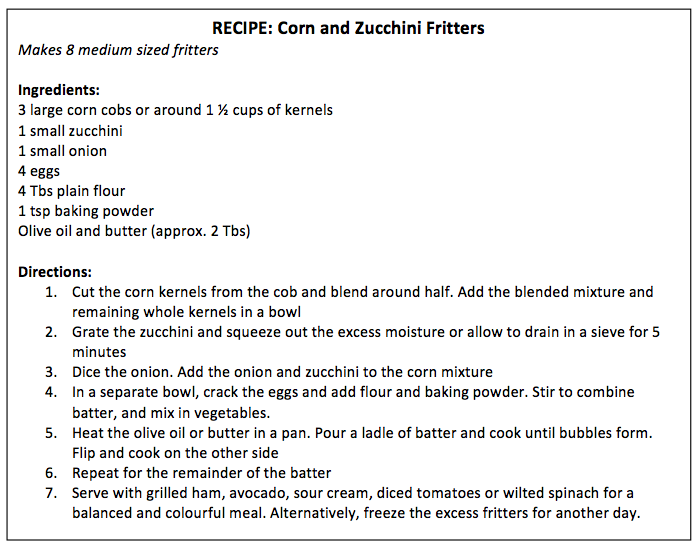To ensure your child maintains a varied and balanced diet during the summer break, Cenovis Home Economist Mandy dos Santos focuses on the three key food groups that children often lack in, and shares her top tips for meeting the recommended daily intake and decoding ingredients on food labels.
1. A is for Add More Veggies
For many parents, getting kids to eat their vegetables is a daily struggle. But persistence is key as vegetables are an essential source of vitamins, minerals and dietary fibre. The Australian Dietary Guidelines recommend that children 4-8 years of age should aim for roughly 4 ½ serves of vegetables each day, while children aged 8-13 years should consume five serves.

Follow these helpful hints to incorporate more vegetables into your child’s diet:
i) Set an example and make it a focus for the whole family to increase their vegetable intake. Ensure vegetables are included in each meal, as it is difficult to achieve five serves solely in the evening, for example, add mushrooms and spinach in a breakfast omelette or have a vegetable based dip such as pesto and guacamole as an afternoon snack.
ii) Build your own veggie garden and teach your little one how to plant, harvest and clean the fresh produce. They will be more enthusiastic to try something they have grown themselves.
iii) Be creative and make mealtime fun. Arrange the vegetables in the shape of their favourite cartoon character, or if that’s too tricky, a simple smiley face will do! If they’re savvier than that, puree, grate or finely chop the veggies and disguise them in sauces, smoothies, baked goods or fritters. For especially fussy eaters, you can also opt for supplements to help top up nutritional intake.
Serving size tip: A serve of vegetables is approximately 75 grams, ½ cup cooked vegetables or 1 cup of green leafy salad.
2. B is for Back to Basics
When children start primary school, fruit often begins to be replaced by fruit juice, however, juice does not offer the same nutritional density as whole fruit. When you juice the fruit you are effectively separating the natural sugars from the fibre. The fibre is not only beneficial for your digestive health, but also assists in regulating energy release.
A 4 – 8 year old primary schooler should be eating 1 ½ serves each day while the recommended daily intake for an 8 – 13 year old increases to two serves per day.
Serving size tip: A serve of fruit is roughly 150 grams, a medium apple or two small plums. Remember dried fruit counts as well and a serve is only 1 ½ tablespoons of sultanas!
3. C is for Calcium
This mineral is important during this growth period for primary schoolers for their muscle and bone strength as well as teeth. Calcium is available in many foods, but dairy is often seen as the most financially accessible to the widest population.
Four to eight year old girls require 1.5 serves per day while it is suggested young boys consume two serves. Females aged 8-13 years require 2 ½ serves with boys of the same age recommended three serves per day.
Serving size tip: A serve of calcium is approximately 250mL of milk (1 cup), 200mL of yoghurt or two slices of cheese.
By Cenovis Home Economist, Mandy dos Santos.











